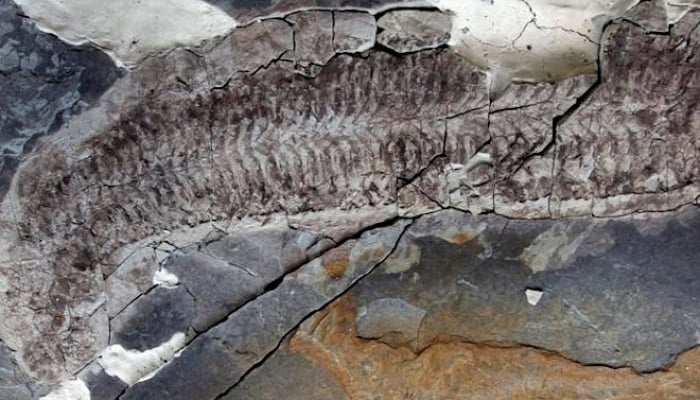
After 25 years of research, a 444-million-year-old inside-out fossil has finally been named.
The fossil, which researchers at the University of Leicester have identified as a new species of multisegmented fossil, has been named Keurbos susanae, or “Sue” for short, after the lead researcher’s mom.
And while its insides seem to have been well-preserved, researchers are still debating what this organism may have been. The researchers published their findings in the journal Palaeontology.
“‘Sue’ is an inside-out, legless, headless wonder. Remarkably, her insides are a mineralised time capsule: muscles, sinews, tendons, and even guts all preserved in unimaginable detail. And yet her durable carapace, legs, and head are missing – lost to decay over 440 million years ago,” Gabbott said in a press release.
He continued, “We are now sure she was a primitive marine arthropod, but her precise evolutionary relationships remain frustratingly elusive.”
Sarah Gabbott, the study’s lead author and a professor in the School of Geography, Geology, and the Environment at the University of Leicester, first uncovered K. susanae about 25 years ago, at the start of her career.
The fossil was in the Soom Shale, which is about 250 miles north of Cape Town, South Africa. Though it may have taken years of painstaking research, Gabbott finally had some answers about this mysterious fossil.
According to the study, arthropods make up about 85 percent of the animals on Earth and include lobsters, shrimp, centipedes, and spiders, among others. Arthropods have an extensive fossil record dating back about 500 million years. However, researchers typically find their exterior fossilized; in the case of K. susanae, it was the opposite.












